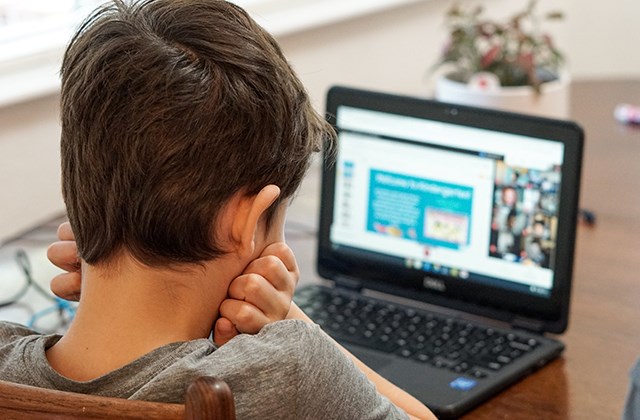Editor's note: This story was originally published by Chalkbeat Colorado, a nonprofit news site covering educational change in public schools. Sign up for its newsletters here: ckbe.at/newsletters
***
Most of Colorado’s students now must learn from home — a stark contrast to just weeks earlier.
In November many school districts, including St. Vrain Valley, switched to entirely virtual learning. A Chalkbeat analysis of the 30 largest districts in the state shows 22 are now fully remote. Of the remaining eight that still provide some in-person instruction, only three offer it to students of all grade levels.
The Roaring Fork school district is one of those three districts. Officials there are pleading with the community to help lower COVID rates so that schools can continue to offer in-person instruction, while also preparing families for disruptions.
“As much as we value in-person learning, the only way we will be able to maintain it is if our whole community can take responsibility for reducing social gatherings and taking all of the precautions that limit the spread of the disease,” Rob Stein, Roaring Fork’s superintendent, wrote in the district’s Thanksgiving bulletin.
He also described the district’s challenges and said some teachers are working “at an unsustainable pace.”
Some districts that are otherwise entirely remote, such as Jeffco and Poudre, are still opening some classroom spaces to students with disabilities or other vulnerable populations.
The 30 largest districts serve more than 83% of the students in Colorado’s public schools.
COVID rates have gone up around the state, prompting several counties to move up a level on the restrictions dial. However, at no point does the state require school districts to close school buildings to all students, instead leaving those decisions up to each district.
Most districts that have switched to all-remote learning are planning to do so through winter break, meaning the earliest they would return to in-person learning would be in January. Officials have cited a surge in COVID cases increasing the risk to their students and staff, or making it operationally difficult to continue running schools.
Gov. Jared Polis, in a press conference Tuesday with Dr. Anthony Fauci of the White House Coronavirus Task Force, said that Colorado wants to prioritize in-person instruction given that it presents a “relatively small risk.”
Fauci agreed.
“Close the bars, open the schools,” Fauci said.
But school district leaders have said that state policies have not made it easy for them to continue offering in-person instruction. In response, the state last week changed some guidelines for who needs to be sent to quarantine. The state also convened a task force to work on other barriers to getting students back in the classroom.
Most districts aren’t bringing students back just yet.
Instead, districts are looking at ways to reduce interruptions in schooling next semester, beginning in January.
Chalkbeat is a nonprofit news site covering educational change in public schools.

